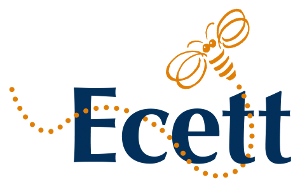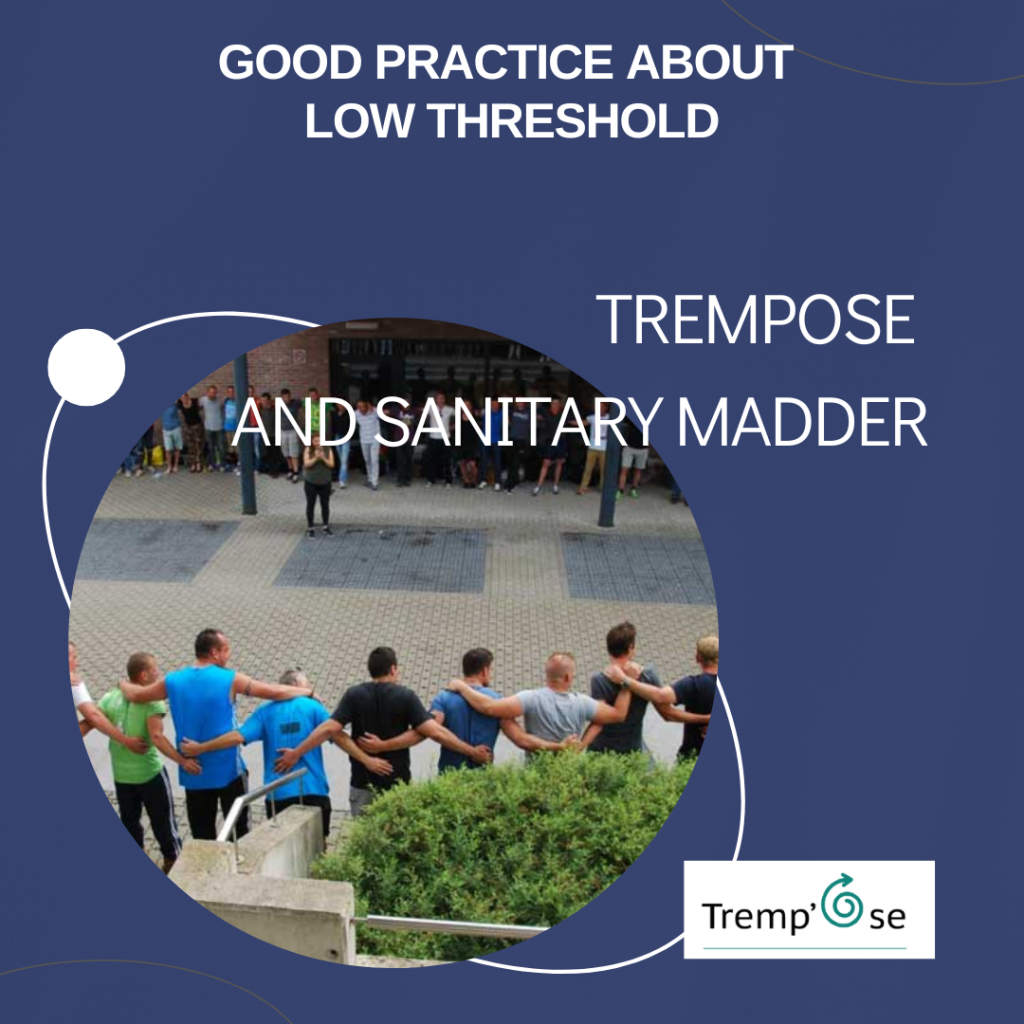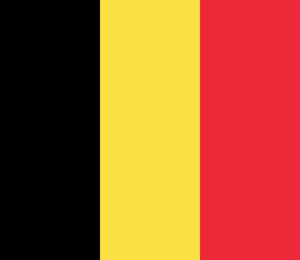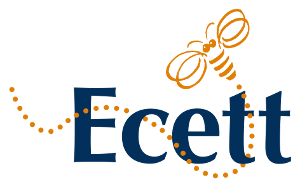Good Practice 2. TrempOse and sanitary madder/ ASBL Trempoline
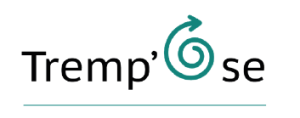
Background…
– A source and resource of Trempoline
– Observations and needs of the service user:
- Pitfalls in terms of the care pathway
- The complexity of the issues
- The “decadence” of a beneficiary profile
- Lack of accessibility to care structures
- The split in practices between low threshold and high threshold
The name to identify the project… Tremp’Ose
Outpatient day centre focusing on therapeutic support for users with a view to recovery
The target public…
A public confronted with a problem related to the use of legal and illegal products and whose basic needs are not being met.
The place to anchor the project…
400 m2 building, on the site of the Hôpital Reine Fabiola located at rue grimard 54 in Montignies s/ Sambre
Tremp’ose is made up of three areas of work
- Reception axis: Structural reception + Mobile reception
- SAS axis
- Community programme axis
The Reception axis responds and constitutes a first step towards recovery.
In collaboration with the non-profit organisation Solidarités Nouvelles, we offer street work where we go to meet people in great need directly where they are. We offer first-line help and provide answers to the primary needs of people in a wandering situation. In order to do this, we develop various working tools within the framework of our mobile reception, such as a sympathetic ear, support, distribution of hygiene/hot weather kits or accompaniment to our reception at Tremp’Ose.
The “Reception at Tremp’Ose” axis is oriented towards the individual needs of the person with an addiction problem. The beneficiaries attending the reception sometimes have no particular request apart from to feel safe, to be connected, to meet a primary need or simply to drop off. This phase allows the client to settle down, to reconnect with him/herself, with their emotions and to take a step forward. The approach is geared towards enabling them to move towards a form of recovery (individual support, referral to partners (housing, night shelters, mental health services, Médecins du Monde, material exchange counters, resto du cœur, SN, etc.), to meet a primary need, and to make them aware of the addiction problem. The reception enables the construction of an individualised care pathway to respond most adequately to the person’s needs as well as to their difficulties, fragilities and expectations.
SAS axis
There is a whole section of the public who wish to be more actively involved in the therapeutic process and who cannot or do not wish to join the community programme. They mention various reasons:
– Fear of the community approach (talking in a discussion group)
– Fear of the duration of treatment and the time commitment (3 days/week)
– The product is still too present (impossible to be “sober” for a whole day)
– In the process of moving towards another structure (withdrawal, aftercare)
– Professional activity does not allow integration into the community programme
– No place in the community programme
Trempoline has decided to set up the “sas” axis in order to respond adequately to the request of the beneficiaries to be part of a more active therapeutic process than the reception. This SAS axis is a transition phase between two projects. The aim is to actively engage the clients in a recovery process and to provide them with tools. Each client has an individualised care pathway. This axis is organised once a week: Thursday afternoons. During this transitional phase the client will experience the community method and tools used in the community programme of Tremp’Ose:
– Respecting the framework, schedules and limits
– Being in connection with other people
– Identification of his/her emotions
– Participation in the discussion group
– Discovering healthy pleasure through playful activities
– Projection and commitment to short and medium term goals
– Use of a consumption chart (for active consumers)
Community programme axis
This programme is based on the community method and is oriented towards group living. This method implies and offers to the beneficiaries that they “live the House”, i.e. that they appropriate it and invest their time, their skills and their time, skills and learning.
Through various tools, the person is led to discover themselves differently and to deepen their self-knowledge.
Organised around the methodology of discussion groups, play activities and work activities in the house, the Community Programme transforms every moment of daily life into a learning tool where behaviour and emotions are worked on with the help of peers and accompanied by the staff.
The Therapeutic Communities method.
Innovative transposition of the model to the low threshold…
The philosophy
The programme
The community
The experimentation
The tools
Adaptations linked to the Covid crisis and development of a health garance
Objectives
– Involvement
– Empowerment
– Prevention
Description
– Social distancing 1.50m
– Hand disinfection
– Wearing gloves in the kitchen and hygiene sectors
– Wearing a mask
– Name on each cup
Benefits for users
– Positioning or place in the group
– Sense of belonging
– The group becomes the bearer of health measures
– Safety
Difficulties encountered and educational challenges
– Difficulty in gaining respect
– Difficulty in positioning oneself
– Exaggeration or being too prescriptive
